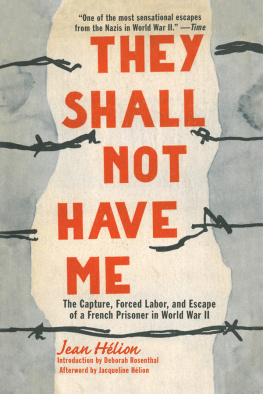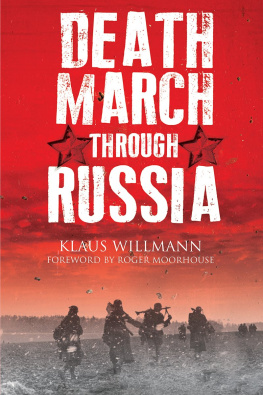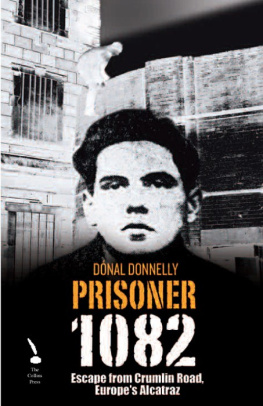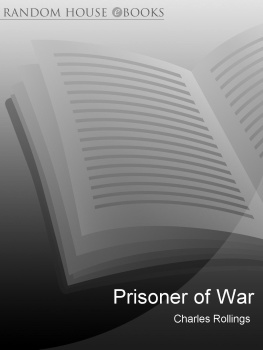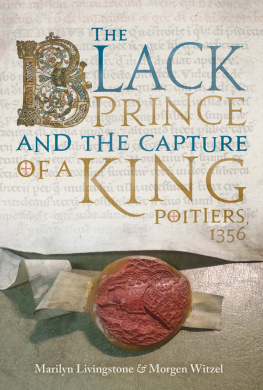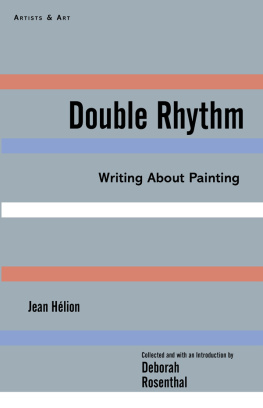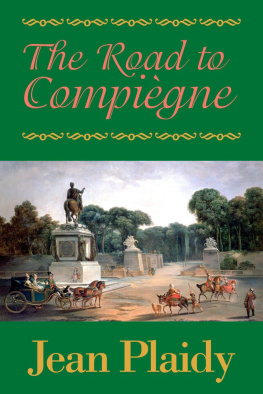Jean Hélion - They Shall Not Have Me: The Capture, Forced Labor, and Escape of a French Prisoner in World War II
Here you can read online Jean Hélion - They Shall Not Have Me: The Capture, Forced Labor, and Escape of a French Prisoner in World War II full text of the book (entire story) in english for free. Download pdf and epub, get meaning, cover and reviews about this ebook. year: 2014, publisher: Skyhorse Publishing, genre: Detective and thriller. Description of the work, (preface) as well as reviews are available. Best literature library LitArk.com created for fans of good reading and offers a wide selection of genres:
Romance novel
Science fiction
Adventure
Detective
Science
History
Home and family
Prose
Art
Politics
Computer
Non-fiction
Religion
Business
Children
Humor
Choose a favorite category and find really read worthwhile books. Enjoy immersion in the world of imagination, feel the emotions of the characters or learn something new for yourself, make an fascinating discovery.
- Book:They Shall Not Have Me: The Capture, Forced Labor, and Escape of a French Prisoner in World War II
- Author:
- Publisher:Skyhorse Publishing
- Genre:
- Year:2014
- Rating:3 / 5
- Favourites:Add to favourites
- Your mark:
- 60
- 1
- 2
- 3
- 4
- 5
They Shall Not Have Me: The Capture, Forced Labor, and Escape of a French Prisoner in World War II: summary, description and annotation
We offer to read an annotation, description, summary or preface (depends on what the author of the book "They Shall Not Have Me: The Capture, Forced Labor, and Escape of a French Prisoner in World War II" wrote himself). If you haven't found the necessary information about the book — write in the comments, we will try to find it.
Jean Hélion: author's other books
Who wrote They Shall Not Have Me: The Capture, Forced Labor, and Escape of a French Prisoner in World War II? Find out the surname, the name of the author of the book and a list of all author's works by series.
They Shall Not Have Me: The Capture, Forced Labor, and Escape of a French Prisoner in World War II — read online for free the complete book (whole text) full work
Below is the text of the book, divided by pages. System saving the place of the last page read, allows you to conveniently read the book "They Shall Not Have Me: The Capture, Forced Labor, and Escape of a French Prisoner in World War II" online for free, without having to search again every time where you left off. Put a bookmark, and you can go to the page where you finished reading at any time.
Font size:
Interval:
Bookmark:


POWs shaking lice out of their blankets. Watercolor by Jean Hlion, 1942, after his escape. Courtesy of Galerie de la Prsidence, Paris.

The special contents of this edition 2014 by Skyhorse Publishing, Inc.
Introduction 2012 by Deborah Rosenthal
Afterword 2012 by Jacqueline Hlion
1943 by Jean Hlion
Watercolor by Jean Hlion, courtesy of Galerie de la Prsidence, Paris
All photographs Fonds Jean Hlion/IMEC used by permission.
All rights reserved. No part of this book may be reproduced in any manner without the express written consent of the publisher, except in the case of brief excerpts in critical reviews or articles. All inquiries should be addressed to Arcade Publishing, 307 West 36th Street, 11th Floor, New York, NY 10018.
Arcade Publishing books may be purchased in bulk at special discounts for sales promotion, corporate gifts, fund-raising, or educational purposes. Special editions can also be created to specifications. For details, contact the Special Sales Department, Arcade Publishing, 307 West 36th Street, 11th Floor, New York, NY 10018 or .
Arcade Publishing is a registered trademark of Skyhorse Publishing, Inc., a Delaware corporation.
Visit our website at www.arcadepub.com.
10 9 8 7 6 5 4 3 2 1
Library of Congress Cataloging-in-Publication Data is available on file.
ISBN: 978-1-62872-376-2
eISBN: 978-1-62872-405-9
Printed in the United States of America
TO MY COMRADES IN CAPTIVITY
WHOM I HAVE LEFT IN GERMANY
DIGGING POTATOES ON THE FARMS
WORKING FOR LONG HOURS
AS LITTLE AS THEY CAN IN FACTORIES
THIS BOOK
THEIR STORY
IS DEDICATED
CONTENTS
INTRODUCTION
by Deborah Rosenthal
I know of no other book quite like Jean Hlions They Shall Not Have Me, his memoir of two years as a POW in Nazi prison camps. It seems to encompass a bundle of contradictions. It is an underground cult classic that was, sixty-odd years ago, a bestseller. It is a narrative written in English by a Frenchman and has never appeared in French. And it is a book about being imprisoned by the Nazis that lets us into the life of a prison camp but is not about the Holocaust, and which is as full of a sense of ridiculousness as it is of catastrophe. Most improbablyit is a book by a fiercely committed, strenuously articulate and intellectual artist that contains no thoughts on art at all.
They Shall Not Have Me is in no sense an ordinary book by an artist. Hlions title tells us that the book is an outcry, a protest. And the absence of art from its pages serves to create a different kind of picturea sketch of the gigantic hole ripped in the fabric of life and human culture by the Nazi assault on the world. Once back in the free world, Hlion seems to have wasted no time in setting out to write it. Although They Shall Not Have Me was written to benefit the Free French and the Allied war effort against fascism, the books underground reputation in more recent years has been sustained mostly by people who are painters. Over the past several decades, painters have heard about the book from other painters, all fascinated by this French artist whose fifty-odd-year career played out in Paris and on the international scene. Hlions They Shall Not Have Me reveals nothing directly about his subsequent long life in art; he died in 1987. It purports to be nothing more than his eyewitness account of almost two years at hard labor. It is, though, a book that tells us something about the artist. We see the young author as though through prison bars. His vignettes and observations serve as slivers of light illuminating the authorand perhaps even his art.
Hlion presents himself to his readers as a French soldier. His story revolves around the European conflict and all its dramatis personae are Europeans. When, after almost two years in captivity, he managed his escape from the Nazi prison ship SS Nordenhaman escape only now told in full in the afterword to the present editionhe made his way through France to his ultimate destination, the United States. He had an American wife with whom he had lived for part of the 1930s in Virginia. He must have written the book quickly, summoning up the events and conversations from two years of captivity, perhaps using notes. They Shall Not Have Me is a serious adventure tale, enlivened by dialogue deftly rendered in English, with smatterings of French and German. Hlion knew some German, and had particular privileges and responsibilities as a prisoner because the Nazis used him as a translator.
The book begins like a newsreel, with a scene directly from the front lines, as Hlions platoon retreats under German fire and the Nazis sweep through France. It has the understated suspense of a really good thriller. At its abrupt end, with Hlions solo escape, we are thrust back out into the ongoing war. In 1943, admirers of the book would have been acutely conscious that they were reading these pages in the free world, in the United States, where its author was now also safe. Clearly, Hlion wrote They Shall Not Have Me in English as a cautionary tale for the English-speaking allies, particularly the Americans, who, though already deep in the war by the time the book was published, had not experienced the Nazi conquest firsthand. In his memoir, Hlion is of necessity a man of action among men of action. But the man of action is a thinker, too, who casts a shrewd and somewhat jaundiced eye on both the captors and his fellow captives, sizing them all up. He spent the year following publication traveling in the United States to do radio and live appearances and talk about his experiences. He saw himself as a messengeran emissarybringing dispatches from the front.
Thirty-five years old when he was conscripted into the French army in 1940, Hlion was a young painter, ambitious, talented, and energetic enough to have already cut a swath through the Parisian art world. Hlion arrived there in 1920, still in his teens, from a year of chemistry studies in Lille and a childhood in provincial France. He was a quick study. He soon began painting. And, as he later said, he immediately found his masters in the Louvre, particularly Poussin. In the village that the Parisian avant-garde had created within the capital city, he found a tutelary spirit in the Uruguayan painter Joaqun Torres-Garca, who sparked his interest in the work of Mondrian. Hlion was the sort of artist, and Paris was the sort of place, where, after being turned down for an exhibition, he was able to gather together a group of artists so they could exhibit on their own. Hlion, who had had a village childhood, might have felt particularly at ease taking hold of his new milieu, acquaintance by acquaintance. Within ten years, he had had solo exhibitions, and was involved with an artists organization devoted to abstract art: Abstraction-Cration. He belonged to this international group for a few years, and edited the first of its publications. In the early years of the 1930s, he made trips to the Soviet Union, to Switzerland, and to London; he traveled and lived in the United States; and he exhibited his paintings in group and solo shows in Switzerland, Spain, England, and the United States. He made his way to most of the places where artists were forming affinity groups around the idea of abstraction.
Hlions abstract compositions of the 1930s are unlike anyone elses. Along with Kandinsky, Arp, Calder, and Mir, all of whom he knew and with all of whom he showed, Hlion saw in the rejection of representation a key to what was modern in the art of the new century. Though he originally found his way into abstraction because of Mondrian, using reduced, flat shapes of color and free-floating lines, the relation of his pictures to Mondrians is unique. Figure-and-ground is Hlions game. He builds complex entities out of arrangements of simplified yet enigmatic forms. Perhaps his apprenticeship as an architectural draftsman played a part in this original synthesis, which mediates shrewdly between Mondrians airy reduction and Lgers machine-age forms. Hlions images suggest, in the words of his friend, the poet John Ashbery, sphinxes erected to guard the secret of their construction. They are abstractions that loom before us in such a way as to suggest a human presence.
Font size:
Interval:
Bookmark:
Similar books «They Shall Not Have Me: The Capture, Forced Labor, and Escape of a French Prisoner in World War II»
Look at similar books to They Shall Not Have Me: The Capture, Forced Labor, and Escape of a French Prisoner in World War II. We have selected literature similar in name and meaning in the hope of providing readers with more options to find new, interesting, not yet read works.
Discussion, reviews of the book They Shall Not Have Me: The Capture, Forced Labor, and Escape of a French Prisoner in World War II and just readers' own opinions. Leave your comments, write what you think about the work, its meaning or the main characters. Specify what exactly you liked and what you didn't like, and why you think so.

